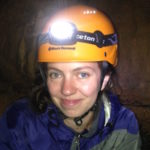 |
November 2, 2017Dr. Emily Estes, University of DelawareOrganic carbon utilization and preservation in a carbon desert |
Abstract
Organic carbon (OC) preserved in marine sediments acts as a reduced carbon sink that balances the global carbon cycle. Understanding the biogeochemical mechanisms underpinning the balance between OC preservation and degradation is thus critical both to quantifying this carbon reservoir and to estimating the extent of life in the deep biosphere. This work examines the content and composition of OC in oxic pelagic sediments from the North Atlantic and South Pacific gyres in order to evaluate preservation mechanisms operating on million-year time scales and to gage heterotrophic activity in these OC-limited environments. We utilize a combination of elemental analysis/isotope ratio mass spectrometry and novel synchrotron-based X-ray absorption spectroscopy. These techniques interrogate the entire particulate organic carbon pool in contrast to more commonly applied techniques that require chemical extractions or demineralization. OC and nitrogen concentrations decrease exponentially from the sediment-water interface to values <0.1% in the deep subsurface and, to a first order, scale with sediment oxygenation. In the deep subsurface, however, molecular recalcitrance becomes more important than oxygen exposure time in protecting OC against remineralization. Deep OC consists of primarily amide and carboxylic carbon in a scaffolding of aliphatic and O-alkyl moieties, corroborating the extremely low C/N values observed. These findings suggest that microbes in oxic pelagic sediments are carbon-limited and may preferentially remove carbon relative to nitrogen from the organic matter pool.
Speaker Biography
Dr. Emily Estes is a postdoctoral scientist in the lab of George Luther at the University of Delaware, studying the formation of nanoparticulate iron phases in hydrothermal vent fluids. She is enthusiastic about interactions between minerals, microbes, and organic carbon as well as developing analytical techniques to explore those interactions. Dr. Estes completed her PhD with Colleen Hansel through the MIT-WHOI Joint Program in Oceanography, utilizing novel synchrotron-based X-ray absorption spectroscopies to evaluate mineral-organic carbon associations and the role of organics in biomineralization. As a C-DEBI graduate fellow, she applied these techniques to pelagic sediments in order to identify the mechanisms behind long-term preservation of organic carbon.
Recording

